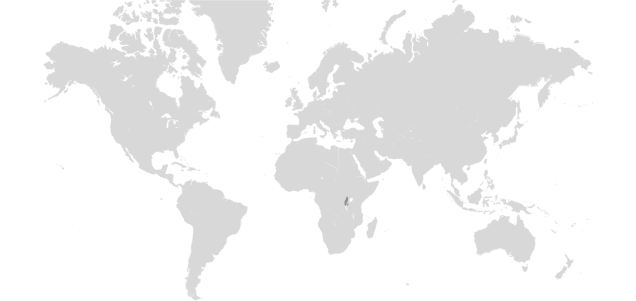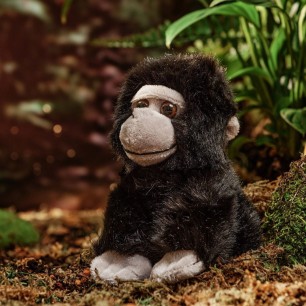There are only around 1,063 mountain gorillas left in the wild. Disease poses serious threats to mountain gorillas.
They are highly susceptible to human respiratory illnesses, and we need to assume that the virus which causes COVID-19 is no different.
Your adoptions will help protect and ensure the long-term survival of the now endangered mountain gorillas and will help fund our vital work around the world. When you choose an animal adoption, you are supporting both your chosen animals as well as wider work to help bring our world back to life.
Adopt a gorilla and receive
They're found in high-altitude montane and bamboo forests – sometimes at elevations of 4,000m – where they mainly eat leaves, shoots and stems. Mountain gorillas generally live in groups with several females and their young, and one dominant male. Dominant males are known as ‘silverbacks’ because they have a patch of silver hair on their back and hips – which they develop when they’re about 12-15 years old.

Threats that gorillas face

HABITAT LOSS
Mountain gorillas live in some of the most densely-populated parts of Africa – the gorillas are now confined to isolated high-altitude forests.
POACHING
Although poaching of gorillas is now thankfully uncommon, they can still often get caught in snares set for other wildlife, causing injury and even death.
HUMAN ILLNESS
Because gorillas share much of our DNA, they can contract illnesses from people – but they don’t have the immune system to fight them. Even a simple cold can devastate an entire gorilla population.

HUMAN-GORILLA CONFLICT
Mountain gorillas sometimes come out of the forest and raid crops. This can lead to conflict with people trying to protect their livelihoods.
How We Can Help
In 1991 we co-founded the International Gorilla Conservation Programme (IGCP). The IGCP is a unique coalition of international conservation organisations, Conservation International, Fauna & Flora International, and WWF, joining forces with national and local partners to ensure the long-term survival of the now endangered mountain gorillas.
As well as monitoring mountain gorillas, we support local people in using their natural resources in a sustainable way that doesn’t damage mountain gorilla habitat. We also try to find ways to reduce people’s need to enter mountain gorilla habitat, which eases the pressure on the forests and the risk of people passing on diseases to the gorillas.
We promote ecotourism so people can see the benefit of living alongside mountain gorillas and help protect gorillas from disease with extra health and sanitation precautions.
Your adoption and support will help us:
- train rangers to detect and safely remove snares set for other animals, which can severely injure or kill gorillas
- work with local communities to build income-generating programmes to help benefit gorillas
- help to protect vital gorilla habitat
- support regular surveys of mountain gorilla populations
- work with local governments to improve management of gorilla habitats like national parks
- fund our other essential work around the world

Last minute gift?

Free delivery
We offer free delivery but ask you to consider helping to cover postage with an optional £3 donation taken at checkout. This means more of your gift can go towards supporting your adoption animal and our wider work.
Your pack will be sent within 2-3 working days - but allow up to 5 working days for it to arrive.
Want to protect other apes too? Check out our adopt an ape page to find out more.















